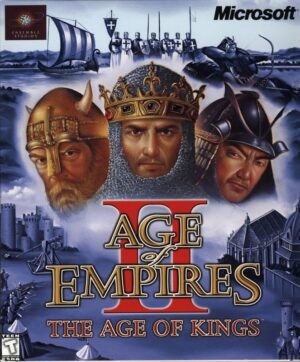Retro Replay Review
Gameplay
Puyo Pop Fever thrives on simple mechanics that unfold into endlessly deep strategic play. At its core, you drop pairs of colored Puyos into a well, aiming to connect four or more of the same color so they vanish. Each vanish can trigger cascading chain reactions, and mastering these combos is both thrilling and immensely satisfying.
What truly sets Puyo Pop Fever apart is its Nuisance Puyos and Fever Meter system. When you clear Puyos, you send gray Nuisance Puyos to your opponent’s side, cluttering their board and hindering their combo potential. Conversely, when your own board fills with incoming garbage, offsetting threats through smart clears not only keeps you alive but also charges your Fever Meter. Once filled, you’re granted a set of prearranged Puyos that make it spectacularly easy to unleash massive chains.
The variety of modes keeps the gameplay fresh session after session. You can pit yourself against CPU opponents in a story-driven single-player campaign, challenge a friend in head-to-head matches, or—on platforms like the Nintendo DS—engage up to eight players at once. Whether you’re fine-tuning your technique in solo Fever stages or screaming at your buddy after sending them a relentless garbage onslaught, the game never loses its compelling pull.
Difficulty curves gently from beginner-friendly tutorials to surprisingly ruthless AI in later stages. For newcomers, the game does an admirable job of introducing basic chaining and offsetting tactics. For veterans, the highest Fever levels offer enough pre-formed chains to let you practice and perfect extravagant five- or six-link combos that can turn the tide of battle in a heartbeat.
Control responsiveness is impeccable. The directional pad (or touch screen on DS) swaps and rotates incoming pieces with precise accuracy, meaning every decision feels intentional. Latency is nonexistent, so whether you’re stacking quickly to build up that fever or frantically trying to clear incoming Nuisance Puyos, the game keeps pace with your reflexes.
Graphics
Puyo Pop Fever’s visual identity is a masterclass in bright, cheerful design. Each Puyo sports a glossy sheen, making the colors pop off the screen against the subdued blue-gray background of the well. The contrast ensures you never lose track of incoming pieces, even in the heat of a fast-paced match.
Character illustrations shine during story cut-ins and win animations. Amitie’s wide-eyed enthusiasm and Raffine’s smirk are rendered in full color, adding personality to what could otherwise be a purely abstract puzzle. The animations that accompany Fever Mode are especially delightful—Puyos sparkle, backgrounds swirl, and celebratory particle effects drive home the feeling of chaining gigantic combos.
On handheld platforms like the Game Boy Advance and Nintendo DS, the sprite work remains remarkably crisp. There’s no noticeable slowdown even when eight players are throwing cascades of Puyos in multiplayer mode. In ported versions on more powerful hardware (PSP, Wii), the game benefits from smoother frame rates and slightly enhanced backgrounds, but the core art style remains unchanged and universally appealing.
Menus and interfaces are clean and intuitive. Button prompts and tutorial overlays use bold colors and large icons, so navigation feels effortless and newcomers won’t feel lost. Audio cues—distinct pops for clearing and satisfying whistles for chains—complement the visuals perfectly.
Story
While Puyo Pop Fever is first and foremost a puzzle game, its storyline gives the experience a charming backdrop. Accord, the beloved teacher of the local magic school, has misplaced her magical flying cane, and rumor has it an award awaits whoever finds it. Players follow young apprentice Amitie and her rival Raffine as they venture beyond campus walls toward a distant, ominous castle.
Along the journey, both heroines challenge and are challenged by fellow students and magical creatures in quick-fire Puyo duels. These lighthearted encounters add context to each match, transforming isolated puzzle bouts into a cohesive adventure. Voice snippets—short exclamations of surprise, triumph, or frustration—lend personality to each exchange without bogging down the pacing.
Though not plot-heavy, the story segments provide enough motivation to progress through successive rounds. There’s a genuine sense of progression as you best one opponent after another, collect clues about the cane’s whereabouts, and witness brief character interactions that reveal Amitie’s boundless optimism and Raffine’s competitive streak.
For fans who crave more narrative depth, the game’s simplicity might feel thin. However, Puyo Pop Fever strikes a fine balance, ensuring the plot never overshadows the core puzzle mechanics. Instead, it delivers just enough whimsy to maintain engagement between rounds.
Overall Experience
Puyo Pop Fever stands as a puzzle classic that has aged like fine wine. Its easy-to-grasp, hard-to-master gameplay loop is eternally addictive, inviting both new and veteran players to jump in for “just one more” match. The Fever system adds a layer of strategic nuance, rewarding careful planning even as you try to outwit an opponent’s incoming garbage.
The game’s presentation is bright, bubbly, and impeccably polished. Whether playing solo or with friends, the audiovisual feedback never fails to elicit a grin when a multi-chain combo finally comes together. Even in crowded multiplayer settings, the screen remains clear and responsive, handling the chaos of flying Puyos with ease.
While the story isn’t the deepest narrative around, it provides a charming framework that elevates each duel beyond a mere score attack. Amitie’s quest to recover Accord’s flying cane and snag a coveted award adds purpose to every puzzle bout and gives you a lighthearted reason to care about each matchup.
In short, Puyo Pop Fever delivers a complete package: intuitive mechanics, vibrant graphics, and just enough story to keep you moving through its ranks. If you’re in the market for a party-friendly yet fiercely strategic puzzle game, look no further—this fever is guaranteed to stick with you long after you power down.
 Retro Replay Retro Replay gaming reviews, news, emulation, geek stuff and more!
Retro Replay Retro Replay gaming reviews, news, emulation, geek stuff and more!









Reviews
There are no reviews yet.